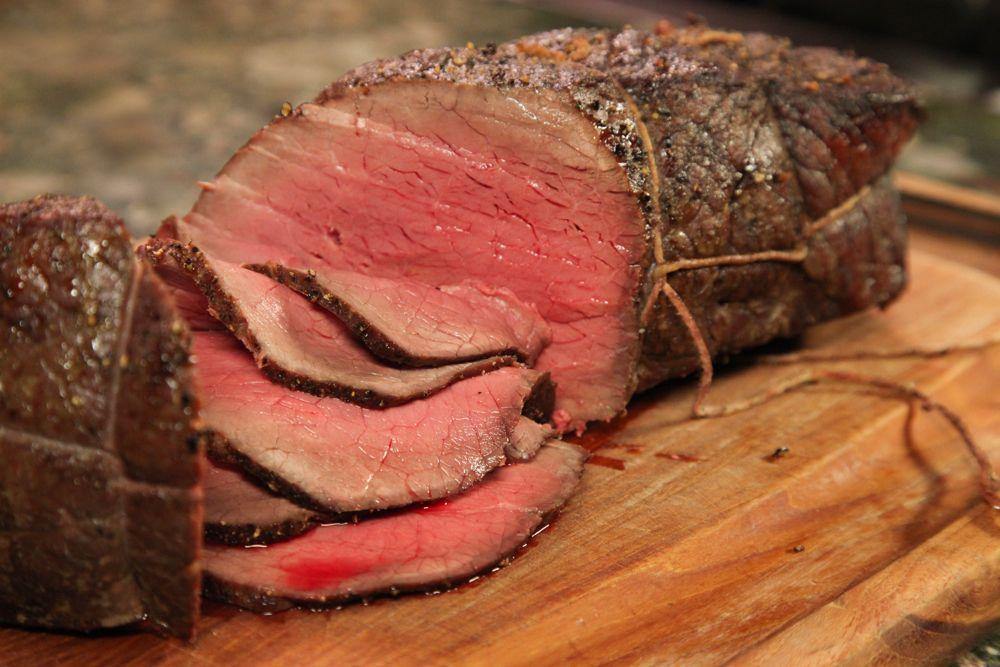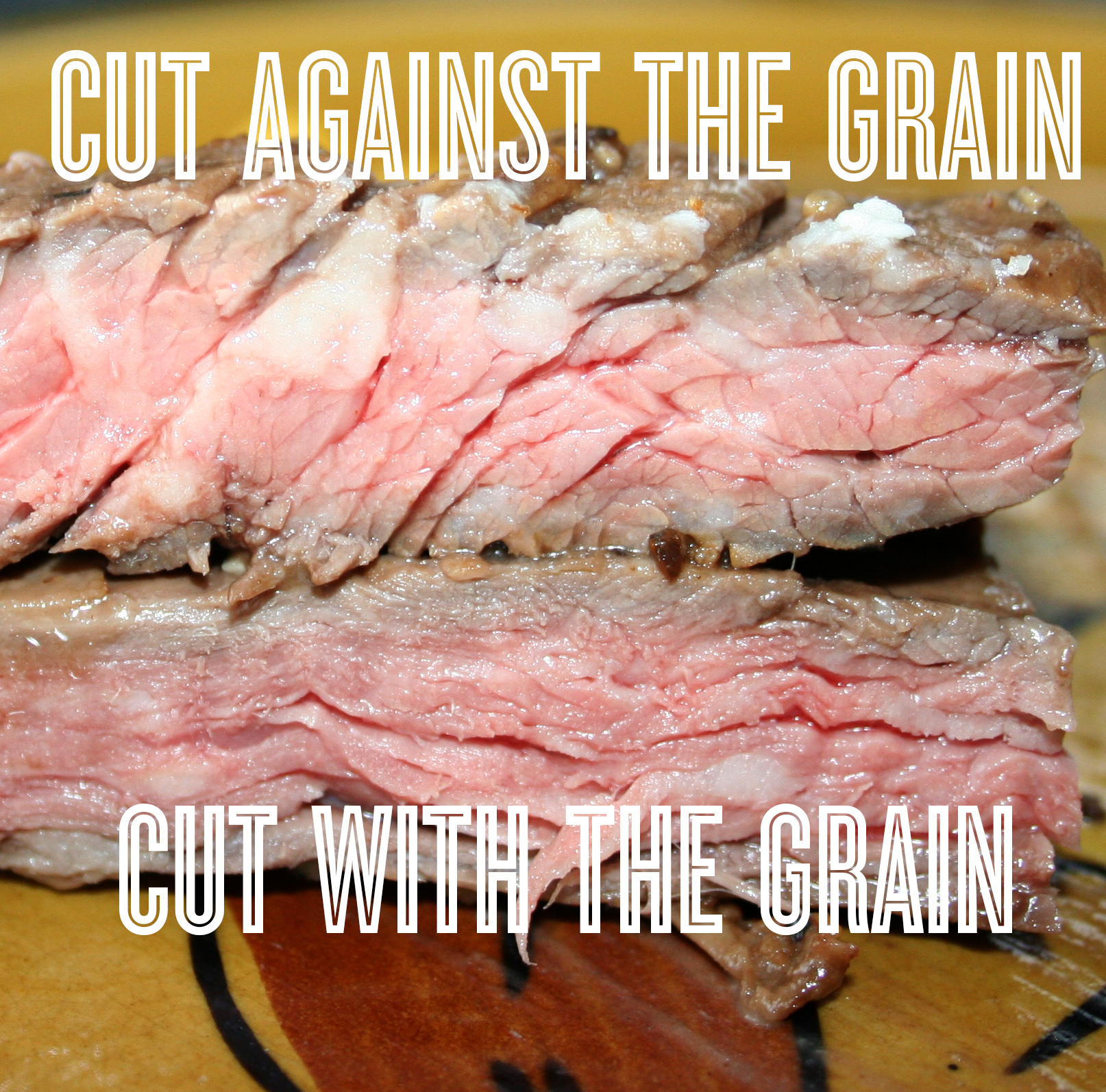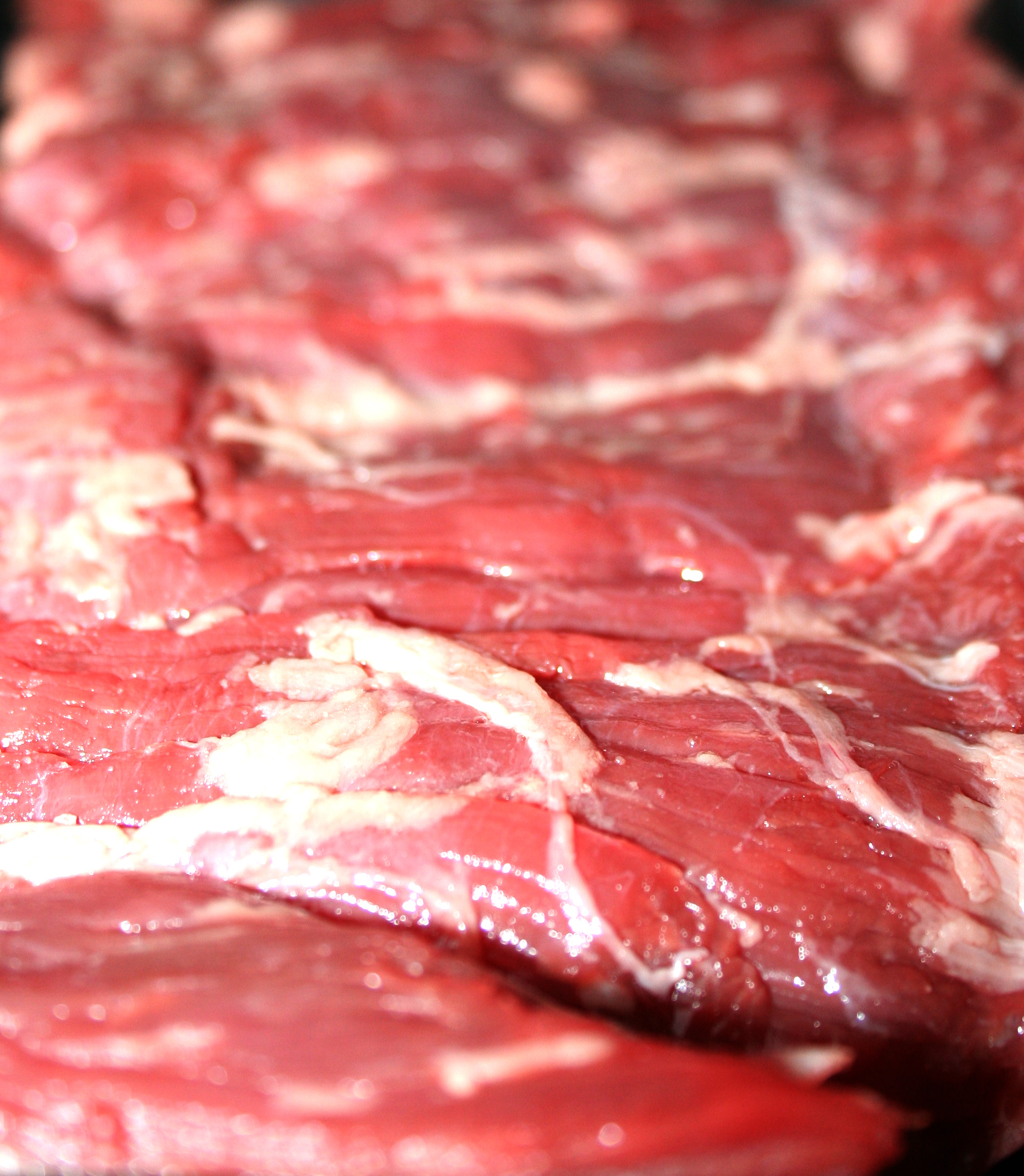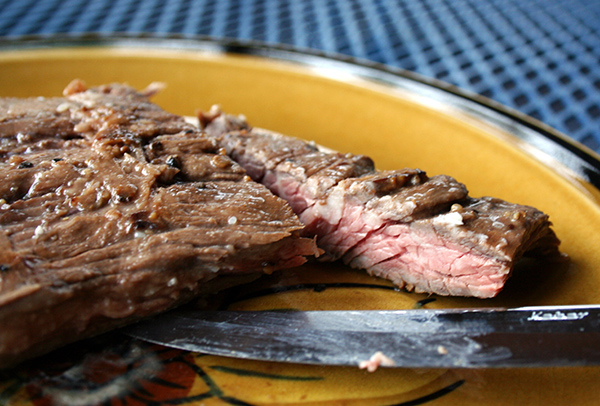Do you know how to cut meat against the grain? After all, it’s a step featured in many recipes, especially when it comes to steak cuts. But why is it so important, and what is the proper technique?

Pot roast via Craftsy instructor Molly Stevens
Before our simple tutorial on cutting meat against the grain, it’s important to understand what the grain is, exactly. What is referred to in cookbooks and food writing as the “grain” is actually the muscle fibers in the meat. The fibers will run in a dominant direction in most cuts of meat, forming natural lines which are sometimes quite subtle and sometimes quite pronounced.
Why cut against the grain?

Photos via CakeSpy unless otherwise noted
Cutting against the grain isn’t purely a visual matter. By cutting against the grain of the muscle fibers, you’ll be breaking up the strong lines in the meat which can prove hard to chew. By cutting against the grain, you’re separating these sturdy fibers into more palatable portions.
In simple terms, cutting meat against the grain will save your jaw a lot of work. While cutting against the grain is not as important with highly tender cuts of meat which come from lesser-used muscles, it will still result in an easier eating experience. For tougher cuts, cutting against the grain is vital to your enjoyment of the dish.
Which way does the grain go?

Before you go against the grain, you’ll have to figure out in which direction the grain goes. Look for rows of parallel lines in the meat. These are the muscle fibers which form the “grain”. While the grain isn’t always completely clean with perfectly parallel lines, it’s typically easy enough to determine the dominant direction of the grain. Sometimes, it is easier to see after the meat has been cooked; if it is too hard to see, such as in a larger cut of meat, slice a small portion of meat off to help get a better visual cue. Meat which has been sliced against the grain has a different texture from the side than meat cut with the grain, as you can see in the above photo.
What kind of knife should you use?
The type of knife you use to cut meat against the grain depends on when you are cutting, and what cut of meat you are slicing. But in general, if you’re cutting before cooking, a sharp chef’s knife should do the trick. If you’re cutting the meat once it’s been cooked and served, be sure to supply a steak knife for everyone.
How to cut meat against the grain
Step 1:
Determine which way the grain goes. If you need to slice the meat before cooking, slice against the grain; if you’re cutting the meat into small cubes or portions, your work of cutting the meat against the grain is done. If you are not slicing before you cook, simply take note of the direction of the grain for later.

Step 2:
Cook your meat as specified in the recipe. Keep in mind that simply cutting against the grain won’t tenderize tougher cuts, so they still need to be marinated for the most tender results. Once cooked, let the meat rest briefly, if called for in the recipe.
Step 3:
If serving meat which will be pre-sliced, slice thinly against the grain. If you’re nervous about if you’ve sliced properly, give the meat a small taste. It should be easy to chew, even if it’s a tougher cut of meat. Serve, and rest assured that whoever is eating the meat you’ve cooked will enjoy their meal.


Share tips, start a discussion or ask one of our experts or other students a question.
No Responses to “How to Cut Meat Against the Grain: The Art of Perfectly Sliced Steak”